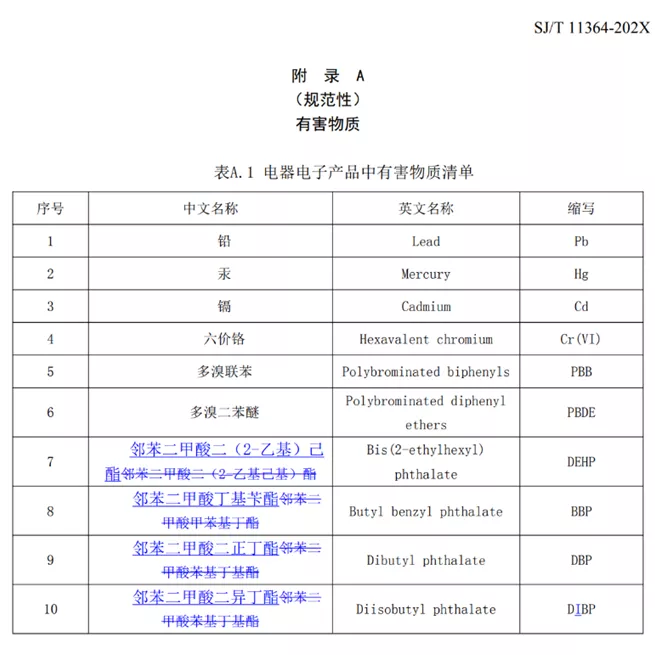On May 19th, 2023, the Technical Committee on Detection Methods of Hazardous Substances (SAC/TC297/SC3) of the National Technical Committee for Environmental Standardization of Electrical and Electronic Products and Systems organized a technical review meeting of GB/T 26572-2011 National Standard No.1 (draft for review) (hereinafter referred to as the "revision"). At the meeting, the review experts listened carefully to the report of the drafting group, and finally agreed to pass the review of the revised form. At the same time, they suggested that the revised form should be submitted to the National Standards Committee for approval and implementation as soon as possible.
The revised list is compiled for the overall deployment of the Ministry of Industry and Information Technology on deepening the management and control of harmful substances in electrical and electronic products, and four kinds of substances, namely phenyl butyl phthalate (DBP), diisobutyl phthalate (DIBP), tolyl butyl phthalate (BBP) and di (2- ethylhexyl) phthalate (DEHP), are included in the list of harmful substances in the Administrative Measures for Restricted Use of Hazardous Substances in Electrical and Electronic Products.
After this review, it will soon enter the next approval and release stage, when the controlled substances will be upgraded from the current 6 items to 10 items (Pb, CD, Hg, Cr (VI), PBBS, PBDEs, DEHP, BBP, DBP, DIBP), which means that China RoHS will officially open the 3.0 era, formally connect with international standards, and promote China's electronic manufacturing industry to implement the "going out" development strategy.
Content and progress of revision of RoHS 3.0 in China
Revision of RoHS 3.0 in China:
◆ SJ/T 11364-2014: Labeling Requirements for Restricted Use of Hazardous Substances in Electronic and Electrical Products
◆ GB/T 26572-2011: Limit Requirements for Restricted Substances in Electronic and Electrical Products
China RoHS 3.0 revision progress:
September 23, 2019
SJ/T 11364-2014 Revision Project.
April 21, 2022
Seminar on revision of standards held.
December 30, 2022
◆ The revised draft of SJ/T11364 is open for comments.
◆ The revised draft of SJ/T 11364 is open for comments, and this standard will replace the No.1 amendment of SJ/T 11364-2014 and 2017.
January 16, 2023
Collection of opinions on the revised draft of SJ/T 11364 is completed.
March 2023
Comments on amendment No.1 of GB/T 26572-2011
May 19, 2023
Seminar on revision of standards held.
Revision No.1 of GB/T 26572-2011 (draft for review) passed the expert review.

After the revised draft comes into effect, enterprises need to mark the names and information of harmful substances in electrical and electronic products in the order of Appendix A (as shown in the above figure).
Warm tips
The approval of this amendment means that the inspection and control of harmful substances in electrical and electronic products in China is in line with the world, China RoHS 3.0 control is right in front of us!! ZRLK suggested that enterprises should pay attention to the latest revision information at any time, and do a good job in the control of o-benzene in electronic and electrical products in advance to ensure that products meet the latest regulatory requirements and avoid trade risks. Our company has a professional technical team and rich experience in product testing, which can help you formulate the most suitable testing scheme. If you need to apply for RoHS certification, please feel free to contact us, and our engineers will serve you as soon as possible!












